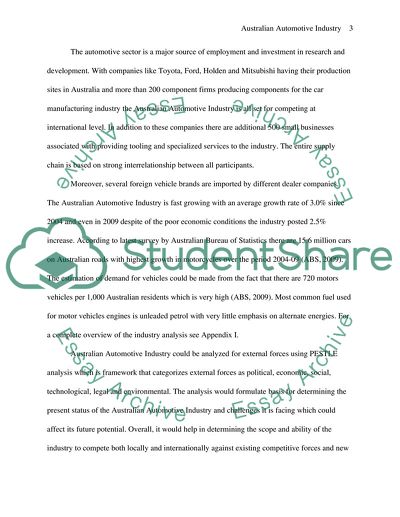Cite this document
(Australian Automotive Industry Assignment Example | Topics and Well Written Essays - 3000 words, n.d.)
Australian Automotive Industry Assignment Example | Topics and Well Written Essays - 3000 words. Retrieved from https://studentshare.org/macro-microeconomics/1732335-analysis-australian-automotive-industry
Australian Automotive Industry Assignment Example | Topics and Well Written Essays - 3000 words. Retrieved from https://studentshare.org/macro-microeconomics/1732335-analysis-australian-automotive-industry
(Australian Automotive Industry Assignment Example | Topics and Well Written Essays - 3000 Words)
Australian Automotive Industry Assignment Example | Topics and Well Written Essays - 3000 Words. https://studentshare.org/macro-microeconomics/1732335-analysis-australian-automotive-industry.
Australian Automotive Industry Assignment Example | Topics and Well Written Essays - 3000 Words. https://studentshare.org/macro-microeconomics/1732335-analysis-australian-automotive-industry.
“Australian Automotive Industry Assignment Example | Topics and Well Written Essays - 3000 Words”, n.d. https://studentshare.org/macro-microeconomics/1732335-analysis-australian-automotive-industry.


